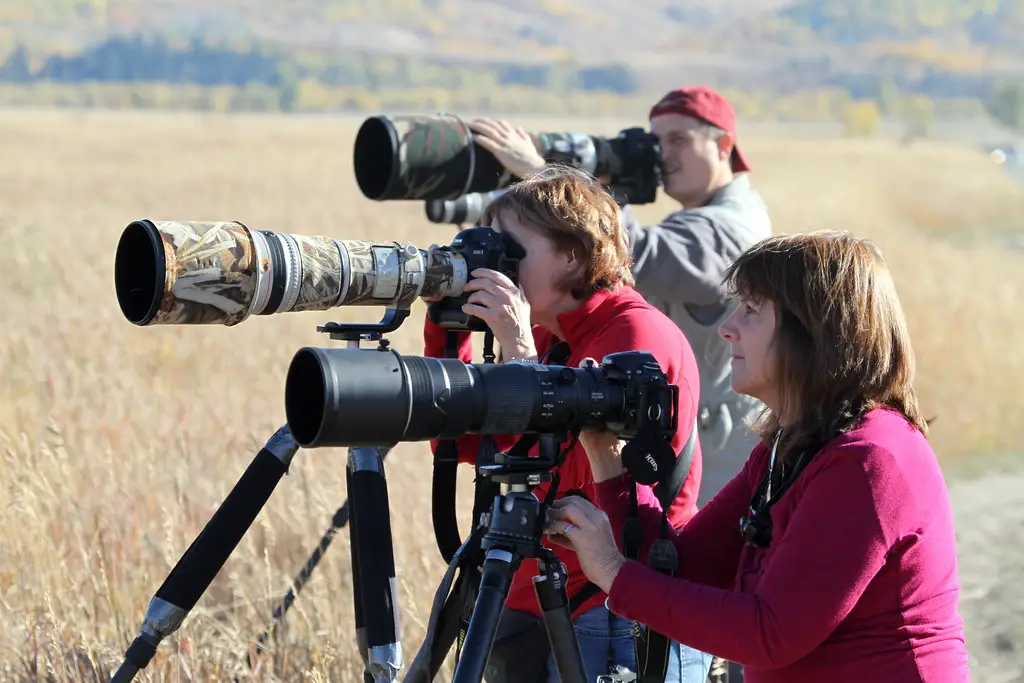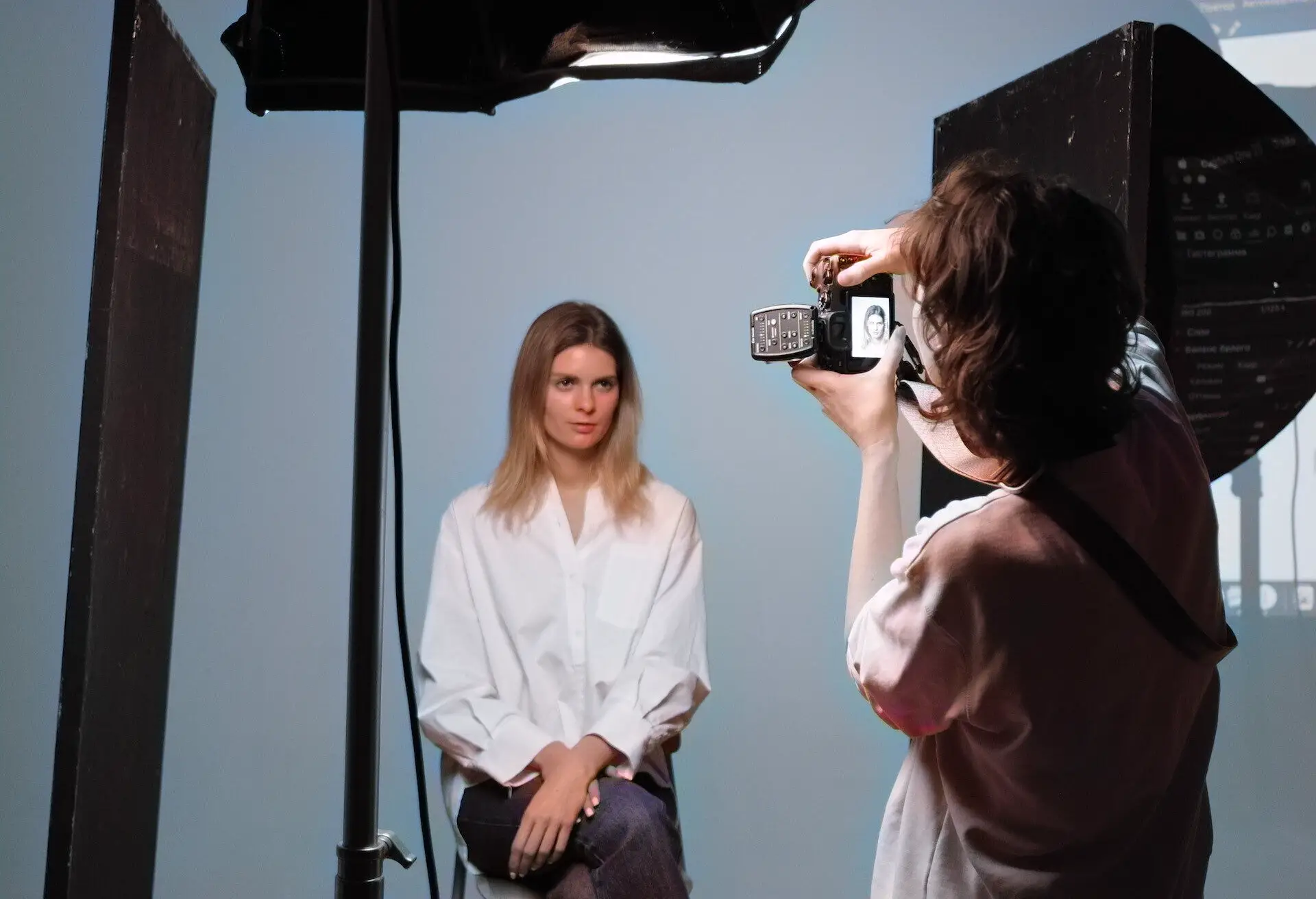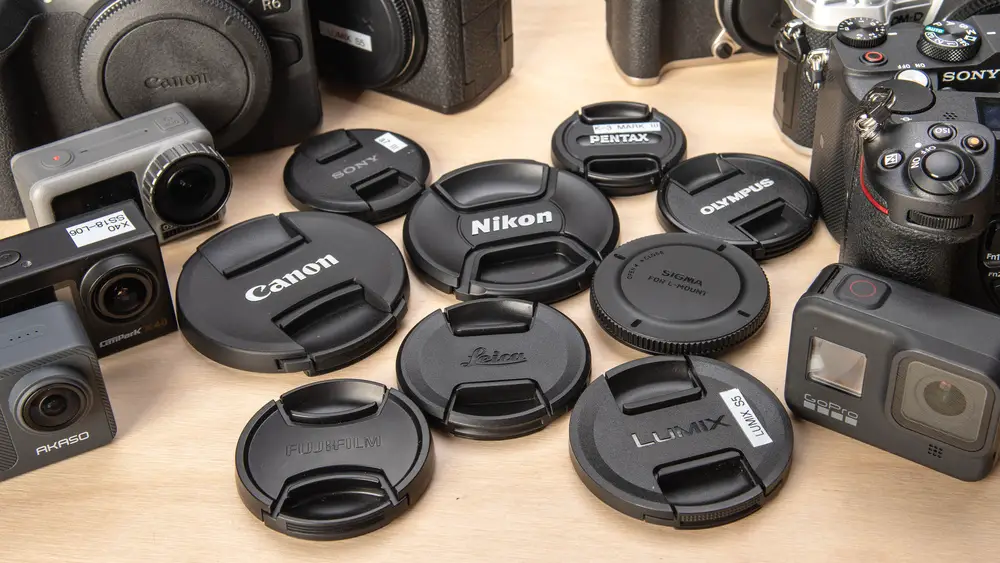A telephoto lens is ideal for shooting distant subjects. But a zoom lens can also be used to capture both distant and close subjects. So which one is better?
Telephoto vs zoom lenses is a common debate among photographers. Both lenses have unique features that give them an advantage over different photography styles.
This article will give you in-depth knowledge of telephoto and zoom lenses, their types, key features, and some popular lens recommendations. Also, you will learn about the ways to choose a lens.
So without further ado, let’s dive in.
Table of Content
What Is Camera Lens?
A camera lens is the most important tool for photography. This tool is made of a series of concave and convex glass plates that allow light to enter the camera and fall on the digital sensor. The amount of light passing through the lens affects how well the images are captured.
In the time of film cameras, the lens used to be attached to the camera and let the light fall on the film strips to form images. However, with the change of time and technological advancement, digital cameras have different types of lenses, such as standard lenses, prime lenses, macro lenses, zoom lenses, telephoto lenses, etc.
The image quality heavily depends on these lenses, as they specialize in capturing different styles and quality of images. That’s why a high-quality lens can produce great-quality images even with a normal camera, whereas a low-quality lens will capture a low-quality image even if you use the best-quality camera.
What Is the Difference Between Telephoto and Zoom Lens?
Before diving deep into the discussion, let’s check out the key differences between a telephoto and a zoom lens.
| Category | Telephoto Lens | Zoom Lens |
| Focal length | Long | Both (short and long) |
| Zooming ability | Present & absent(prime) | present |
| Field of view | shallow/ narrow | Both (wide & narrow) |
| Price | expensive | reasonable |
| Using range | long distance | Both (long & short distance) |
| Weight | Heavy | Both (compact and heavy) |
Telephoto Lens
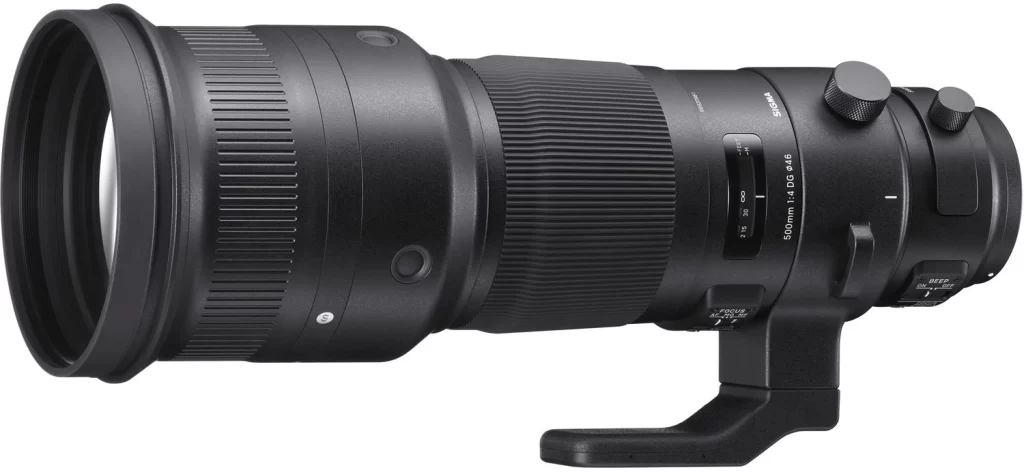
You may have heard that a telephoto lens is recommended for long-distance landscape, sports, or wildlife photography. But why is a telephoto lens preferred among the many types of lenses? What does telephoto mean? What are its specialties? Which telephoto lens can you use? Everything will be discussed in this section.
What Is a Telephoto Lens?
Before knowing about telephoto lenses, one must first understand what telephoto means. Telephoto is a camera lens system that gives distant objects a large view. Therefore, a telephoto lens is a special type of long-focus lens that brings distant objects closer to the camera and makes them look bigger.
Interestingly, it has a short physical length compared to its focal length. The long focal length creates a narrow depth of field, resulting in the magnification of distant objects to make them appear closer than with a standard lens. Usually, cameras with 35mm digital sensors consider lenses with focal lengths greater than 60 mm as telephoto lenses.
This lens is perfect for photographers who are unable to approach the subject up close due to safety concerns or other geological constraints. And the best feature of this lens is that it creates an amazing contrasting focus between the background and foreground that gives the composition an artistic perception.
Which Lenses Are Considered Telephoto?
Telephoto lenses redefine the boundaries of photography. These versatile lenses come in both prime and zoom varieties. Prime telephoto lenses are telephoto lenses with a fixed focal length, and zoom telephoto lenses are telephoto lenses with an adjustable focal length.
Based on the wide range of focal lengths, telephoto lenses are categorized into three types, which are-
Short Telephoto Lens
A lens with a focal length range of 85mm to 135mm is classified as a short telephoto lens. These lenses are ideal for shots where the camera and the subject are not too close but not too far apart. Examples of short telephoto lenses are the 85mm prime lens and the 135mm prime lens.
Features:
- Have a shallow depth of field
- Separates foreground from the background
- Creates sharp foreground with blurred background
- Ideal for wedding shoots, candid photography, portrait photography, and more.
Medium Telephoto Lens
A lens with a focal length between 135mm and 300mm is categorized as a medium telephoto lens. This lens is usually used in situations where there is a lot of action and the camera needs to maintain a significant distance. Besides, they are bigger and heavier than short telephoto lenses. Examples of medium telephoto lenses are the 135mm prime lens, the 70–200mm zoom telephoto lens, etc.
Features:
- Good for medium to far photoshoots
- Great for creating bokeh effects
- Ideal for sports and action photography, event photography, portrait photography, etc.
Super Telephoto Lens
A lens with a focal length above 300mm falls under the super-telephoto lens category. These are the most expensive and heavy lenses. The best thing about this lens is its handy zooming ability, which allows photographing from a greater distance. An example of a medium telephoto lens is 100-400mm. Some of these also have magnifications similar to those of a telescope.
Features:
- Great for extreme distant photography
- Creates beautiful soft background
- Compression effect removes perspective
- Ideal for wildlife photography, motorsports photography, nature photography, astrophotography, etc.
What Does a Telephoto Lens Do?
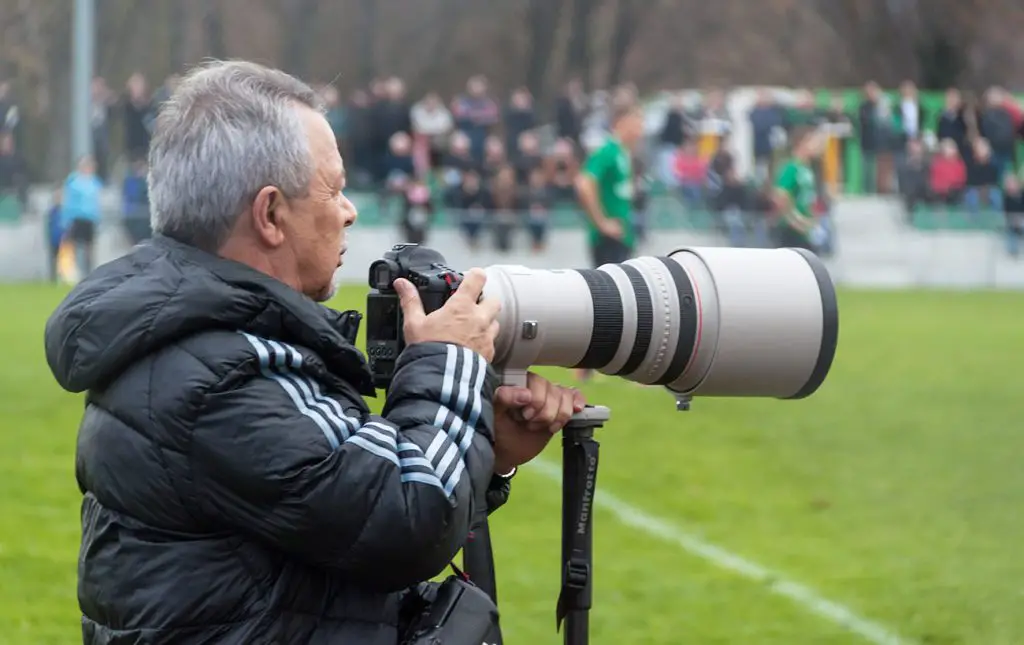
By now, you know about the types of telephoto lenses and which focal length is ideal for which kind of shot. However, apart from making objects appear closer, the telephoto lens can be used for several other purposes.
Curious to know what a telephoto lens is used for?
Let’s learn about the different purposes for which you can use a telephoto lens.
- Distort perspective: The foreshortening effect of the telephoto lens makes the background object appear closer to the foreground object. As a result, the objects’ sizes appear similar, even though they may not be in reality. Thus, taking portraits can make facial features proportional or, in the case of landscape photography, can enlarge the moon’s apparent size.
- Fill the Frame: You can utilize the powerful zooming feature of the telephoto lens to capture close-up shots and fill the frame with your subject.
- Astrophotography: The 300mm ranged telephoto lens is great for capturing close-up shots of the moon or the stars in the night sky.
- Create Bokeh: This lens can be used to create amazing bokeh if the background is significantly far from the subject. All you have to do is get closer to the subject while maintaining the maximum aperture setting.
Most Popular Telephoto Lenses are
The focal length, aperture, and other important features make every telephoto lens different from the others. Among all the brands and models, it can be challenging to decide which telephoto lens is the ideal one for you. To help you decide, we have shortlisted some of the most popular and efficient telephoto lenses.
The best telephoto lenses available in the market are-
- Canon EF 70-300mm f/4-5.6 IS II USM (Full-frame & APS-C camera)
- Sigma 70-200mm f/2.8 DG OS HSM (Full-frame camera)
- Canon RF 100-400mm f/5.6-8 IS USM (Full-frame camera)
- Sigma 500mm F4 DG OS HSM Sports (Prime lens for Full-frame & APS-C camera)
- Sony E 70-350mm f/4.5-6.3 ED G OSS Zoom Lens (APS-C camera)
- Nikon 70-200mm f/2.8G ED VR II AF-S Nikkor Zoom Lens (Full-frame camera)
Zoom Lens
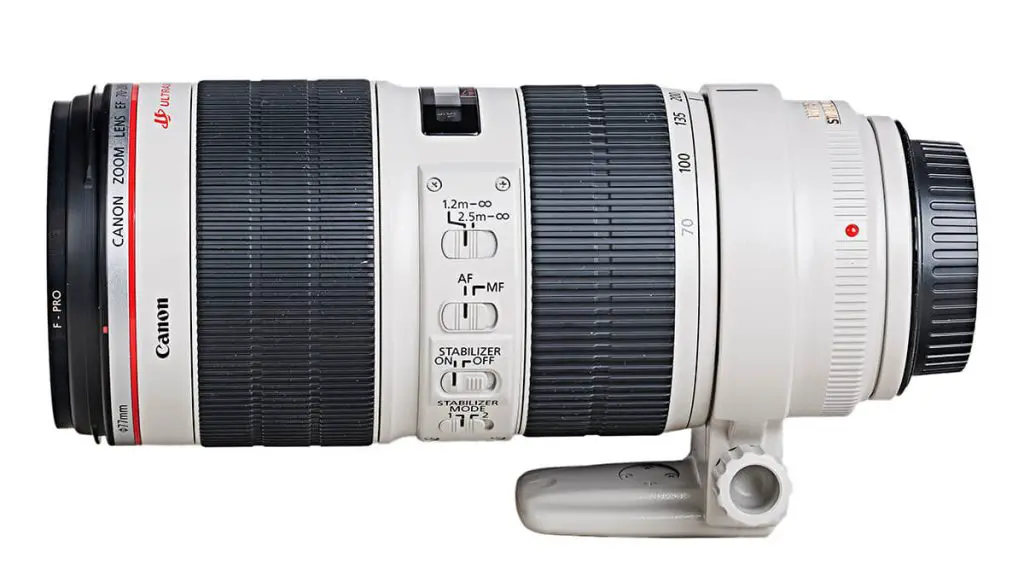
You may have heard that you don’t need many lenses for photography if you have a zoom lens. A zoom lens is ideal for any kind of photography, whether you want to shoot distant objects or close-up shots. In this section, you will learn about zoom lenses, their categories, how to use them, and some recommendations for the best ones.
What Is a Zoom Lens?
First things first: What Does Zoom Mean?
In photography, zoom refers to magnifying subjects in the frame to make them
appear larger without changing the camera’s position. So, a zoom lens is a type of lens that has an adjustable focal length that allows photographers to shoot at different focal lengths. That means photographers can easily reframe a scene without the need to change their physical position.
The feature that makes the zoom lens everyone’s favorite is that its range of focal lengths starts with a wide field of view that captures large scenes and ends with a narrow angle of view that makes distant objects closer. Hence, it can be used for any type of photography, be it macro shots, standard portraits, or telephoto shots.
Which Lenses Are Considered Zoom?
Every photographer, whether an amateur or a professional, prefers to use a zoom lens because of its adjustable zooming capability. Besides, they are compatible with every type of camera, be it a full-frame DSLR, an APS-C DSLR, or a mirrorless camera.
Considering the focusing ability, a zoom lens is of two types, which are-
Parfocal Lens
A parfocal lens is a unique type of lens that maintains its focus over the entire range of its focal lengths. It is also known as a true zoom lens as it allows zooming in and out without losing focus on the subject. It’s ideal for cinematography, wedding photography, or sports because of its great dilly zoom and whip or crash zoom abilities.
Varifocal Lens
A varifocal lens is a lens whose focus shifts as the focal length changes. This manual refocusing lens is great for still photography, as photographers need to design individual compositions with different focus settings.
Apart from the above categories, zoom lenses can be classified into different categories based on their zooming range, which are-
Wide-Angle Lens
A wide-angle lens has a zoom range of less than 35 mm. Usually, the focal length of this type of lens is smaller than that of a normal lens. Therefore, it is ideal for capturing large areas like landscapes, cityscapes, or travel photography.
Features:
- Greater depth of field
- makes a nearby object appear larger than a distant one
- Ideal for interior, architecture, landscape, sports, etc. photography
Standard Lens
A standard zoom lens has a medium range of focal length of around 50 mm. The most significant advantage of this type of lens is that its field of view is comparable to that of human eyes. Therefore, the images it captures look exactly like what we see in real life.
Features:
- Smaller aperture yields a deeper field of focus
- Great for capturing natural landscapes, streets, or portrait photography
Superzoom & Telephoto Zoom Lens
This type of lens is categorized by its magnification ability. In general, lenses with a focal length of 200mm or more have an 8x magnification, while lenses with a focal length of around 300mm or more have an 11x magnification.
Note: These lenses also fall under the telephoto lens category, which has been explained in the above section.
What Does a Zoom Lens Do?
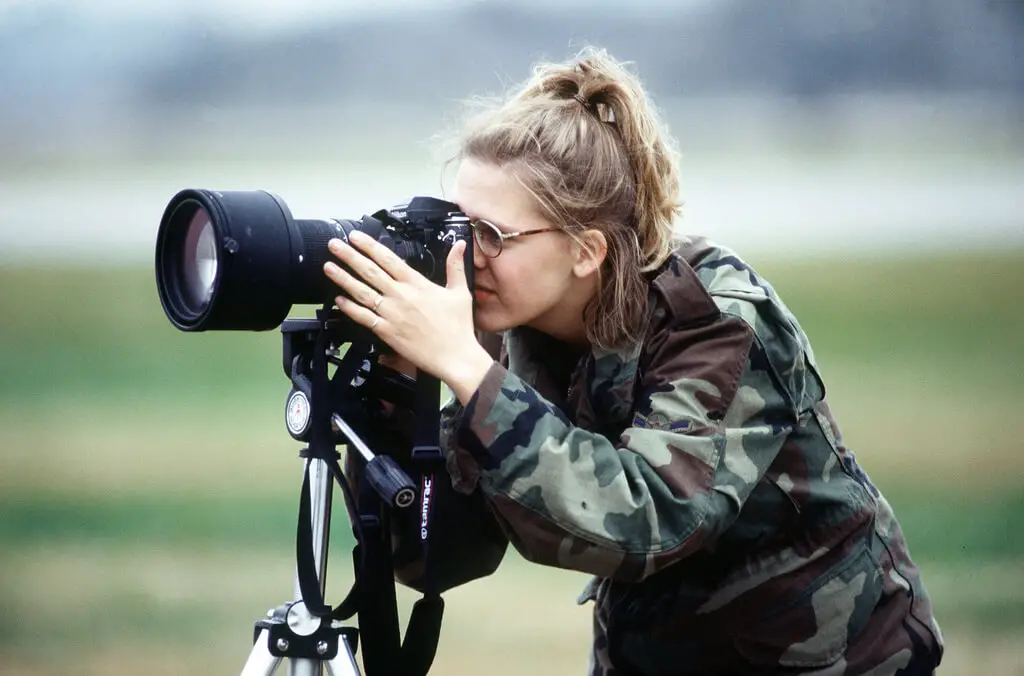
A zoom lens is a photographer’s best friend. Whether you are traveling or shooting from a stable position, photography becomes quite a hassle-free experience for every photographer.
Want to know what is a zoom lens used for?
Let’s learn about the different purposes for which you can use a zoom lens.
- Capture large scene: The wide angle of view can be used to capture a large scene to extend the context of the subject.
- Attention to detail: The magnification of this lens starts at 2x and goes beyond 10x. So, you can capture close-up or macro shots and bring out the finest details of your subject.
- Shoot candids: As it offers easy reframing with the zoom-in and zoom-out features, you can shoot distant or close-up candids just by changing the focal length.
- Foreground objects appear large: The zoomed-in shot blurs the background, giving the impression that the foreground objects are larger than the background. So, this feature is great for shooting portraits.
Most Popular Zoom Lens are
Selecting a zoom lens can be daunting as it has numerous features to consider, such as specifications, image quality, and compatibility with the camera. To make things easier, we’ve listed some of the popular zoom lenses you can consider purchasing.
The best zoom lenses available in the market are-
- Canon EF 16-35mm f/2.8 III USM Lens (Full-frame & APS-C camera)
- Canon EF 24-70mm f/2.8L II USM (Full-frame)
- Tamron 10-24/3.5-4.5 Di II VC HLD (APS-C camera)
- Fujifilm XF 16-55mm f/2.8 R LTM WR (APS-C camera)
- Nikon NIKKOR Z 24-120mm f/4 S Lens (Mirrorless camera)
- Canon RF 24-105mm f/4L IS USM (Full-frame)
Telephoto Vs Zoom Lens Which Is Better?

The telephoto and zoom lenses have some distinctive features that make them unique and best for certain photography niches. Although you can’t say one is better than the other, you can select one over another in certain situations, for instance-
Street Photography: A street is a spontaneous place. Every moment vanishes in the blink of an eye and is irretrievably lost. So, a zoom lens can be considered better for capturing street candids. However, a telephoto lens would work better if you want to capture distant busy street life.
Landscape Photography: If the subject of your landscape photography is at a close distance or you want to shoot a destination wedding in the middle of a beautiful landscape, then using a zoom lens would be better. But if your subject is a distant mountain or birds flying in the sky, then using the telephoto lens is recommended.
Wildlife Photography: The wildlife environment is fascinating as well as dangerous. Numerous wild animals, including tigers, lions, wolves, and others, are free to roam, so keeping a safe distance from them is necessary. So, a telephoto lens is ideal for this type of photography. However, if your subject is a small insect or bird at a closer distance, then using a zoom lens would be perfect.
Star or Astrophotography: Shooting the moon or stars requires a highly magnified lens, which is only possible with a telephoto lens. So, using a medium-range zoom lens won’t apply to this photography style.
How to Choose the Right Lens for You?
Choosing the right lens may seem difficult, but if you know about the features of the lens that you should consider while selecting it, the process will become easier. On that note, the following section states some important factors you must consider while hunting for a lens.
Sensor type
The first and most important factor to consider is the sensor type of the lens. Some lenses are compatible with a full-frame camera, some support an APS-C camera, and some can be used with both types of cameras. So, select the lens according to the sensor of your camera.
Aperture
An aperture of a lens determines how much light it will allow to pass through to the sensor. A wide aperture lens is ideal for shooting in low light, using a fast shutter speed, creating a bokeh, and more. Hence, considering the aperture is a must.
Focal length
The focal length of a lens determines how wide or narrow a scene will be captured. The prime lens with a fixed focal length captures high-quality images, but it is not good for long-distance shots.
On the other hand, zoom and telephoto lenses allow the flexibility to adjust the focal length to capture images from both short and long distances without changing their position. So, depending on your photography niche, choose the focal length that may work best for you.
Image stabilization
Image stabilization is an amazing feature of modern cameras. This function minimizes the impact of the camera shake and maintains the sharpness of the pictures. However, not all digital cameras have this feature. So, check if the lens offers this feature to enjoy the benefits of this technology.
FAQs
Is a prime lens better than a zoom?
Both prime and zoom lenses have perks and drawbacks. Compared to a zoom lens, the image quality and sharpness are better with the prime lens. However, the fixed focal length of the prime lens makes it less versatile compared to a zoom lens. Therefore, although the image quality is better with a prime lens, a zoom lens is more convenient.
How far does a 200mm lens zoom in?
200mm zoom is insignificant compared to the other telephoto lenses, which have a focal length of 500 to 800 mm. However, if you consider a 50mm lens standard, then a 200 mm lens will provide 4x magnification. That means your subject will appear 4 times closer than the actual distance.
Why do I need a telephoto lens?
A telephoto lens makes a distant subject appear closer. If you cannot get close to your subject, want to capture candid shots of wild animals, or want to create the illusion of a bigger moon, you need a telephoto lens.
Why do I need a zoom lens?
A zoom lens allows photographers to use different focal lengths with a single lens. So, if you need versatility in your photography where you would love to shoot both closeup shots or distant shots, you would need a zoom lens.
Can a telephoto lens be a zoom lens too?
Yes, a telephoto lens can be a zoom lens, too, because it comes in two variants, one with a fixed focal length and the other with an adjustable focal length. Also, the focal length of the superzoom lens exceeds 200 mm, which is a type of medium telephoto lens.
When is a zoom lens better than a telephoto lens?
A telephoto lens is mainly used to capture distant subjects. So, if you need the flexibility of using both short and long focal lengths, that time zoom lens would work better than a telephoto lens.
What lens do I need for long-distance shots?
For long-distance shots, a telephoto lens is ideal, as its long focal length makes the distant subject appear closer to the foreground. They have a wide range of focal lengths, like 200mm, 400mm, or even 800mm. So, no matter how far away the shots you intend to take, a telephoto lens will have your back.
What is the difference between digital zoom and optical zoom?
Optical zoom is a lens feature that adjusts the distance between the camera sensor and the subject to make the subject appear closer. On the other hand, digital zoom magnifies a specific portion of an image and crops out the portion to make it appear bigger.
Both of them have some drawbacks, such as optical zoom causes lens errors, whereas digital zoom affects image quality.
What is the fastest telephoto lens?
The fastest telephoto lens is the Sigma 200-500mm f/2.8 APO EX DG. It has a maximum aperture of f/2.8, which allows for a fast shutter speed and low light photography. However, this lens is also quite large and heavy, and also quite expensive. Other fast telephoto lens options are the Canon EF 300mm f/2.8L IS II USM and the Nikon AF-S Nikkor 300mm f/2.8G ED VR II.
What does mm mean in lenses?
The standard unit of the focal length of a photographic or camera lens is expressed in millimeters (mm).
How is the focal length measured?
The focal length of a lens is the distance between the subject and the sensor of the lens. It determines how much area will be captured by the lens and is measured in millimeters (mm).
How is the focal length of a lens determined?
The focal length of a lens determines how much of a scene it can capture. The higher the focal length, the more magnified scene it will capture, and the lower the focal length, the more scene it will capture. So, if the focal length of a lens is 16-35 mm, it will capture the widest image at 16 mm and the most magnified image at 35 mm.
How to calculate zoom?
Calculating the zoom ratio of a lens requires dividing the longest focal length by the shortest value. For example, the longest focal length in the Canon EF 24-70mm f/2.8L II USM Lens is 70 mm, and the shortest is 24 mm. When you divide 70 by 24, the result is 2.91. So, after rounding the value to the nearest whole number, the zoom value is 3x.
Final Words
Telephoto and zoom lenses are both important in the photography industry. So, consider your photography niche when deciding on the lens that would be best for you. However, if you still need to figure it out, you can consult other photographers who are using these lenses to test them out and make a decision.

